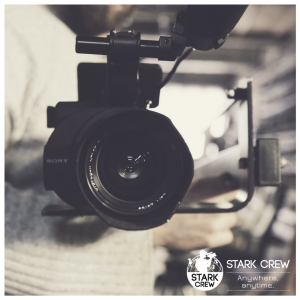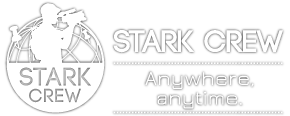
We are launching a series of behind the scenes information articles and this first series is based on “How to make great event videos.” Whether you are shooting a convention, seminar, workshop, or launch party, event videos are some of the most challenging – exciting – videos you can make. Of course, a great video is built upon great foundations.
INSIDER TIP #3: Interview Angles
One of the first questions is where should the interviewee be looking. Should the interview subject look into the camera or at the interviewer? It depends on what you want to achieve and the comfort level of the interviewee.
Looking directly into the camera can create a sense of intimacy with the viewer, but only if the interviewee is relaxed and comfortable. Unfortunately, looking directly into the camera lens can be quite unsettling for non-professional actors – it can feel like staring into the stone-faced, expressionless, indifferent face of a police officer as you try to explain why you were driving over the speed limit. Also, in the context of an event, your interviewees are often running from activity to activity, making it even harder for them to relax on camera. In short, if it is obvious that your interviewee is very nervous, it is best that he or she looks at the interviewer and not directly into the camera lens.
On the other hand, when the interviewee is comfortable looking directly into the camera, it creates a real sense of intimacy with the audience. In the world of non-professional actors, people who usually pull this off well are C-Suite executives, industry experts, marketing directors, and communication staff. Many people in these roles often have to speak on camera often and are accustomed to it.
For example, here´s a video we made with Sheryl Sandberg, Chief Operations Officer at Facebook. You can see how relaxed and comfortable she is as she announces the launch of Facebook´s Journalism Accelerator Program.
As Sheryl is relaxed and well-spoken, she makes an intimate connection with the viewer while simultaneously expressing authority and determination. It´s the type of presentation style we often see in experienced leaders.
However, most people are not comfortable looking into the black hole of a camera lens. Renowned documentary filmmaker Errol Morris overcame this obstacle by inventing a system called an Interrotron in which the interviewee is looking at an image of the interviewer´s face on a screen that works like a two-way mirror through which the camera records the interviewee. Perhaps the best way to explain this is in the video below.
While using an Interrotron is a pretty cool solution, it´s still a rare one. Most crews do not have experience with this setup, it´s not always easy to rent the needed equipment, and at fast-paced events, there is little room for possible delays that could occur by setting this up. There are also newer systems that have come out such as Eye Direct TV, but most video crews still do not have this in their arsenal yet. Here at Stark Crew, if customer considers that looking directly into the camera is absolutely necessary, we will source a solution for them such as the ones just mentioned.
It is not obligatory to always create such close intimacy with the viewer. While looking directly into the camera creates a closer face-to-face relationship with the audience, looking slightly off camera at the interviewer puts the audience in a less intimate role. And this is fine. Looking directly into the camera is ideal for emotional and personal stories, which is why we often see it in documentary films. But looking slightly off-camera still conveys information is an effective way, as you can see in the video below we made for Facebook to cover their Data For Good event in Paris.
If these interviewees were talking about their personal emotional struggles over the obstacles of life, then yes maybe looking directly into the camera would have been ideal. But it´s not needed here because the important thing in this video is informative and educational.
If you are seeking a very intimate connection with the viewer, looking directly into the camera is desirable. Of course, this is not always possible because non-professional actors may get nervous looking directly into the camera. A couple of solutions to keep the interviewee looking directly into the camera would be using devices such as an Interrotron or Eye Direct TV. Although, unfortunately, these devices are often unavailable.
The rule of thumb is thus the following: if your subject is nervous looking directly into the camera and/or the subject matter is not personal or emotional in nature, then just have the interviewer sit next to the camera – as close to the camera as possible. The interviewee should then look at the interviewer and not directly into the camera.
